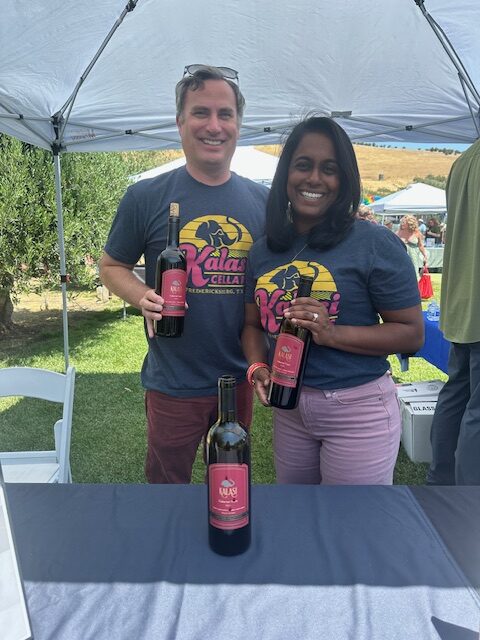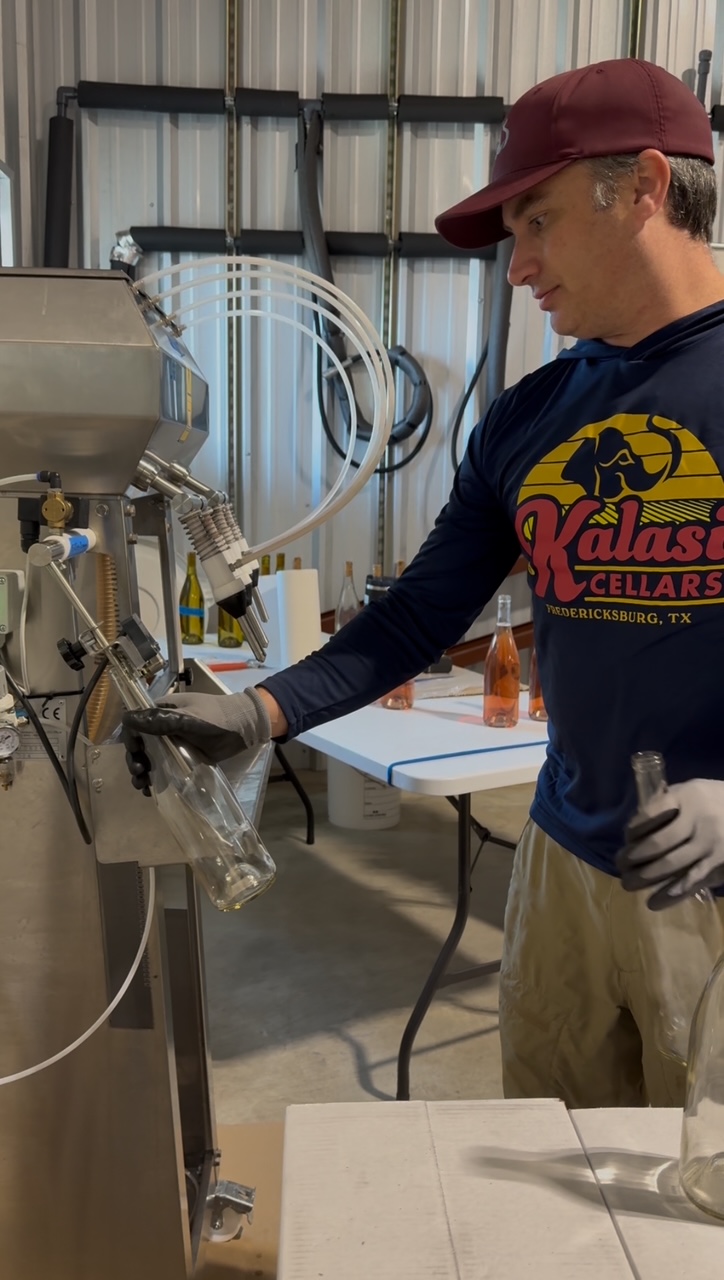September 25, 2021: What Does Harvest Mean?
If you haven’t been around the Texas Hill Country, you might not know that we’re currently wrapping up harvest 2021! This is the time of year when vineyards and wineries cross their fingers hoping for no unexpected weather events leading up to a pick, and wineries are scrambling to start the winemaking process. So what all goes into harvest? I’ll tell you what it looks like for us this year as we focus on making some fantastic red wines from 100% estate grown grapes in Texas.
Throughout the growing season, winemakers are contracting with vineyards to buy grapes (fruit) and checking on how the grapes are growing. Have we seen bud break? Are the grapes undergoing veraison (changing color, a phase in grape ripening)? As we get closer to harvest, more and more attention is being paid to the grapes. Things that vineyard managers and winemakers look out for include:
- What is the yield projected to be?
- How even are grapes ripening?
- What is the sugar content (brix) of the grapes?
- What is the pH of the grapes?
- What do the skins taste like?
- What does the juice look like when a few grapes are crushed?
- What do the grapes feel like when squeezed slightly between two fingers?
The first question regarding yield has major implications for a winery. A low yielding vineyard (e.g., under 3 tons of fruit per acre) typically produces higher quality grapes than a high yielding one. These grapes will have more concentrated flavors and thus be capable of making higher quality wine. While quality is one aspect of yield, wineries need to make sure they will receive sufficient fruit to support their wine program. If you need 5 tons of Merlot for a Bordeaux blend, but the vineyard you’ve contracted with can only supply 3 tons, then you’ll need to source additional fruit.
As for ripening, winemakers are looking at the consistency of color across the grapes. Not only the color, but the taste of the grapes. Do some still taste “green”? From a chemistry point of view, vineyards take random samples of grapes in a block to test for brix (sugar) and pH. Both of these have major implications for the characteristics of wine the grapes will produce, such as the alcohol content.
At this point the vineyard manager and winemaker are in close collaboration to ensure that the wine grapes are picked at the perfect time. As we only use grapes off our own vineyard, we’re having daily discussions with vineyard staff to better understand when we’re going to want to harvest our grapes. Once we’ve made the determination of when we want to pick, we coordinate transportation from the Texas High Plains (where our vineyard is located) to our winery in Fredericksburg, TX.
To make the best quality wine, we harvest during the coolest times of the day as this is when sugar levels in the grapes are most stable. We typically use our Pellenc mechanical harvester. It is one of the very best harvesters in the industry. It shakes the vines, coercing them into dropping their fruit, then separating jacks / leaves / MOG (material other than grapes), so that we are left with just grapes we want to use to make wine. Occasionally we will hand harvest, in which case people go down the rows of vines and manually cut off each bunch of grapes and drop them into a bin. After grapes are harvested into bins that hold 1,000 pounds of grapes, we load the bins of fruit on refrigerated trucks to make the 5 hour trip to our winery.
Now that the grapes have made it to our winery, how do we process them? First we have to de-stem any hand harvested fruit. Grapes that were mechanically harvested do not necessarily require this step as a lot of the stems have already been removed. Next we take measurements such as brix and pH again so that we understand exactly what we’re starting with to make wine. From this point on, each winemaker will follow different processes based on their preferences. Some add yeast immediately. Others wait a bit. And then some winemakers don’t add any yeast and wait for the wild yeast found on grape skins to ferment the grapes into wine.
Fast forward to fermentation. We ferment all our red grapes in bins – the same bins used during harvest. Everyday we’re punching down the fruit. What this means is basically that we’re homogenizing the fermenting grapes in the bin. We want the grapes that were at the top to be down low now so that they aren’t drying out. We want the yeast to ferment all the juice, not get stuck in a little pocket within the bin. Other wineries will skip fermenting in bins in favor of fermenting in tanks. In this case wineries typically don’t do punch downs but instead do pump overs. The concept is somewhat similar. Juice from the bottom of a tank is pumped and sprinkled over the top of the grapes in the tank. This keeps the cap wet so the grapes don’t dry out.
After fermentation has finished, it’s time to press out the grapes! We dump our grapes into an elevator (basically an angled conveyor belt) that lifts the grapes into the top of our press. The press cycle runs to gently squeeze the grapes so that the juice can be captured in a bin below the press. Now that the grapes have been pressed and the juice is captured, the juice is then moved into tanks or barrels for aging.
Overall the process of picking grapes to fermenting to pressing takes about a week, but “harvest” lasts for multiple months as different varietals of grapes ripen at different times. This means grapes are picked over the course of ~3 months, so this weeklong process happens time and time again.


